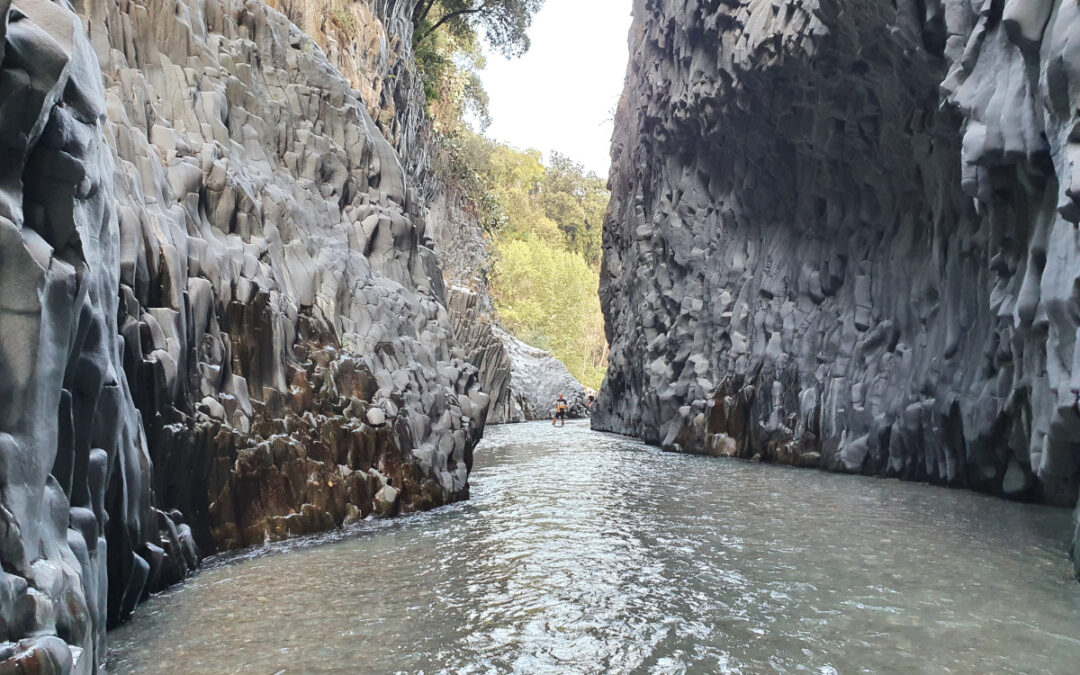In addition to the 4 mighty main craters and the almost 300 lateral craters, Etna also harbours a number of other volcanic formations.
We have already told you about some of them…
Lava tunnel
A lava tunnel is formed during an eruption when a crust forms on the surface of the slowly flowing lava in flatter terrain. The lava can continue to flow hot under this crust. Usually, the tunnel created in this way empties at the end of the volcanic activity, when no more new lava comes. About 190 lava tunnels are known on Etna, often discovered only by chance. But there are probably many more.
You can read more about it here:
- The lava tunnels of Etna I: Formation
- The Lava Tunnels of Etna II: Geological features of the lava tunnels
We visit one of the most beautiful lava tunnels, the Serracozzo Grotto on the north side of Etna, on our Etna Trekking Tour.
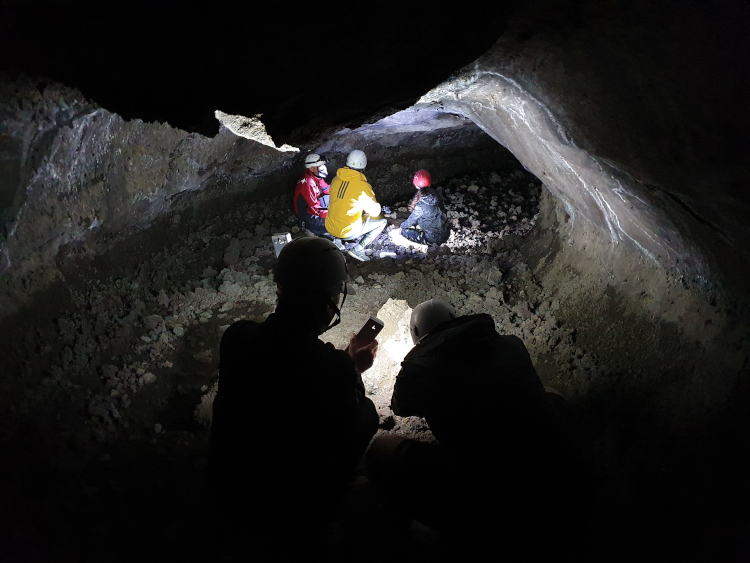
Basalt columns in the Alcantara Gorges
The Alcantara River forms the border between the volcano and the rest of Sicily on the northern side of Etna. The river cuts up to 25 metres deep into the volcanic bedrock in places. When you wade into this gorge, you think you are in another world: bizarrely twisted pentagonal or hexagonal columns of lava wind in all directions.
How did these strange shapes come about?
Probably 8,000 years ago, lava rivers flowed over the Alcantara River, which already existed at that time. Because of their great mass and thickness, the lava flows cooled only very slowly. On the one hand, this causes the cooled lava to be extremely hard, and on the other hand, it enables the formation of the prismatic columns:
The lava has cooled on the surface and contracted in the process. This has caused cracks to form in the surface, just as with soil that dries out. The more uniform the composition of the lava, the more regular the cracks that form. Hexagons form most frequently, but other polygons also occur. These cracks continue into the interior of the lava, forming the columns.
The Alcantara then sought its bed again and over time dug into the lava, forming the gorge and bringing the lava columns to light.
On our Etna & Alcantara Tour, we first trek on Etna and then refresh ourselves in the ice-cold waters of the Alcantara Gorges.
Lava ropes
Sometimes the surface of a lava flow looks like ropes lying side by side.
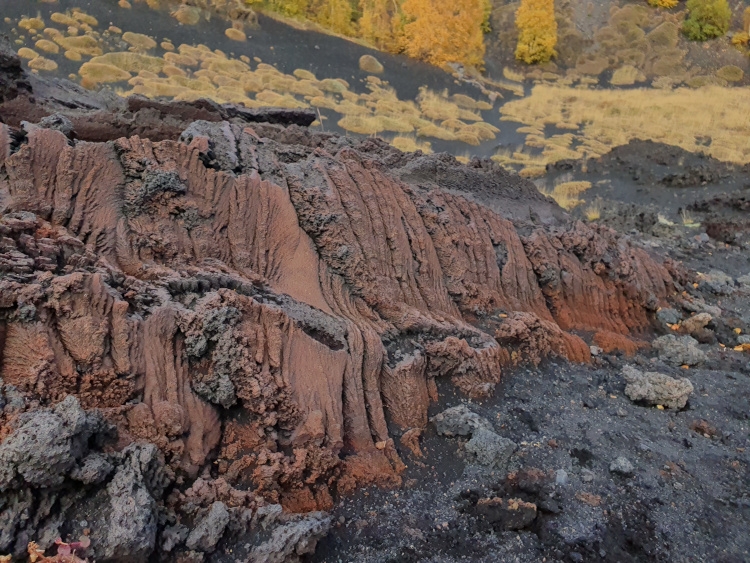
It forms when the lava flows very slowly and thus begins to cool at the surface. A kind of skin forms, like when milk has become too hot. Below the surface, the lava remains hot and continues to flow, shifting this skin and compressing it.
These lava ropes are a manifestation of Pāhoehoe lava (the name comes from Haweian and means smooth, unbroken lava). This is a thin-bodied, basaltic lava.
Cannon stones („pietre cannone“)
A lava flow is a destructive force that usually buries everything under it.
Sometimes, however, you can still find remains in a lava flow that bear witness to the former inhabitants of the slope.
When still very hot and thus still very liquid lava meets large trees (small trees burn immediately in the lava), it can happen that so-called lava trees or tree molds are formed. In Sicily they are also called pietre cannone (cannon stones) because of their shape.
The lava flows around the tree trunk, cools down on contact with the tree and begins to solidify. The part of the tree that protrudes from the lava flow burns immediately. The lower part of the tree burns very slowly. When the lava has cooled, there is nothing left of the tree.
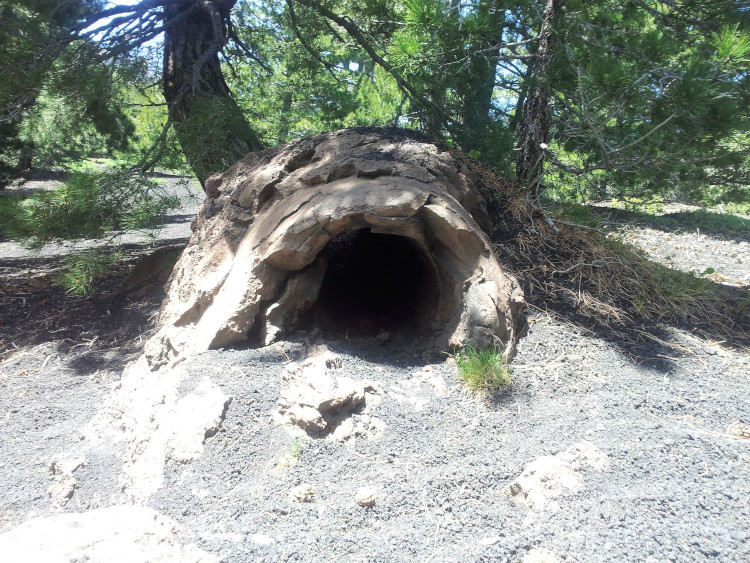
When an eruption is coming to an end, i.e. when no more new lava feeds the lava flow and the lava flows away, the lava flow lowers. If this is the case, only the round crust that has formed around the trunk remains and protrudes vertically from the lava flow. By the way, you can also see from these trees how high the lava flow was originally. However, it also happens that the trees are carried away by the lava flow or that the lava wraps itself around fallen trees. In this case, horizontal canon stones are formed.
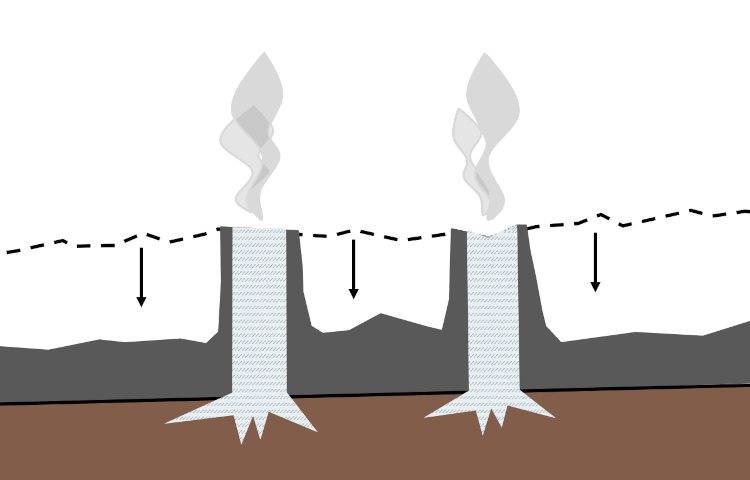
If the lava flow does not subside, e.g. because it is in a valley and cannot drain away, the tree molds remain as round holes in the lava flow.
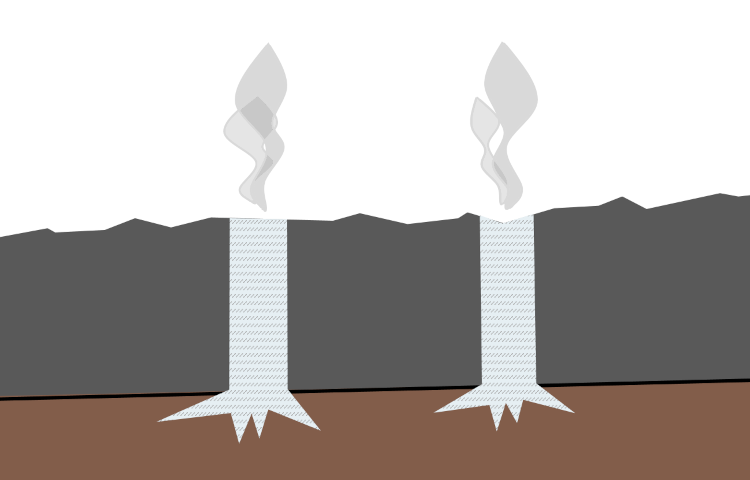
If the lava was very liquid, you may even be able to see the imprints of bark or knotholes on the inside of the cannon stone. Sometimes you can also find remains of charred wood. In the case of a lava flow whose age is unknown, one can then try to estimate its age by means of radiocarbon dating.
On Etna we find these canon stones, for example, at the following places:
- On the south side: South of Monte Nero degli Zappini, on the Mt. Nero degli Zappini Trail.
- In the northeast:
- At Piano Provenzana: on our North Craters tour we pass two canon stones at the beginning of the trail.
- West of the Sartorius craters
- Near Monte Baracca
